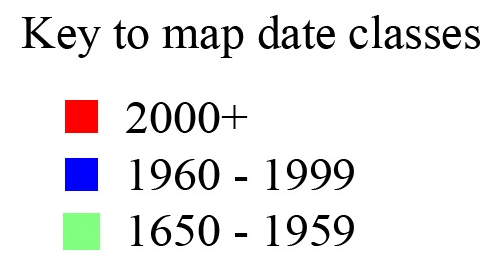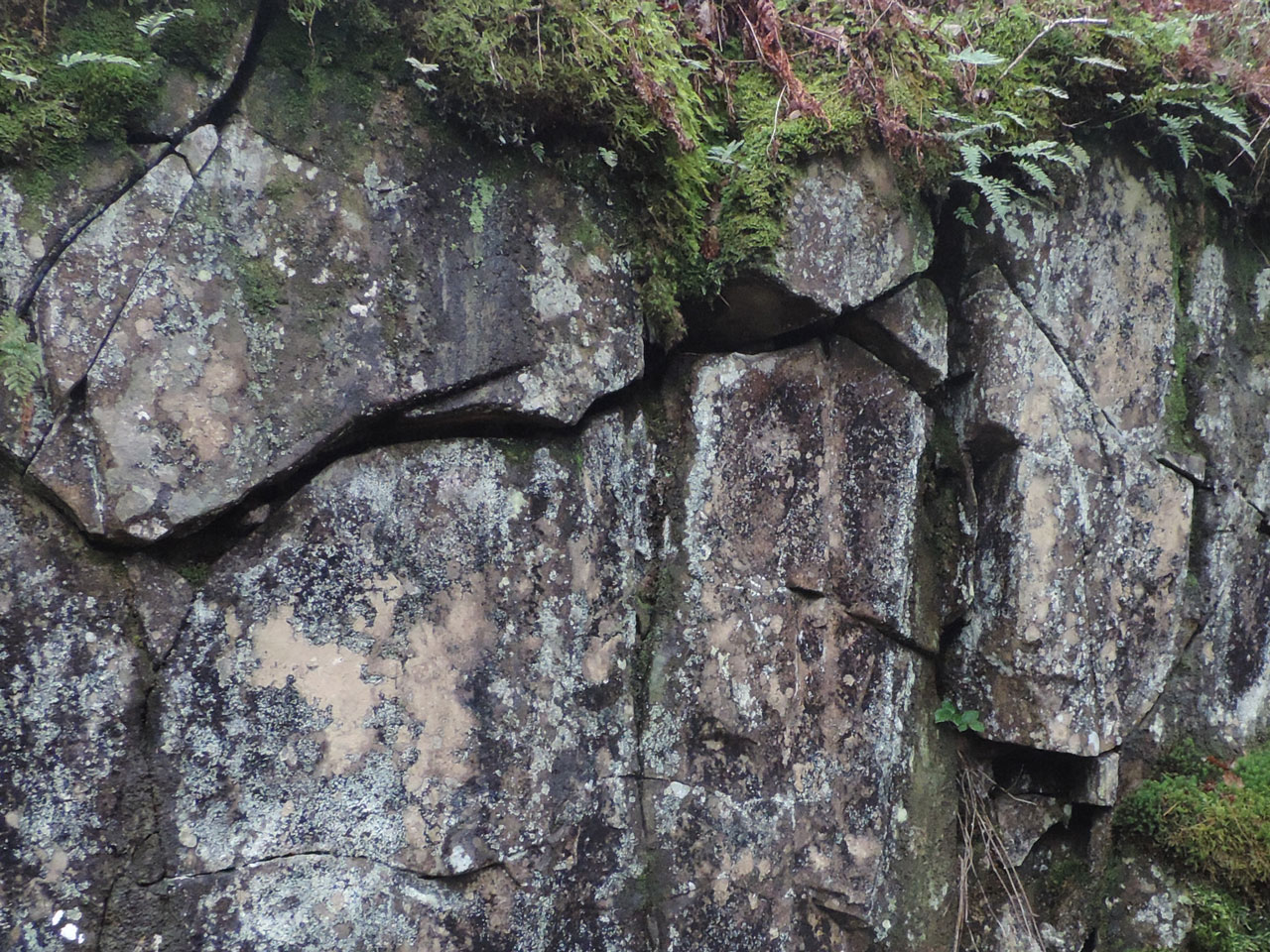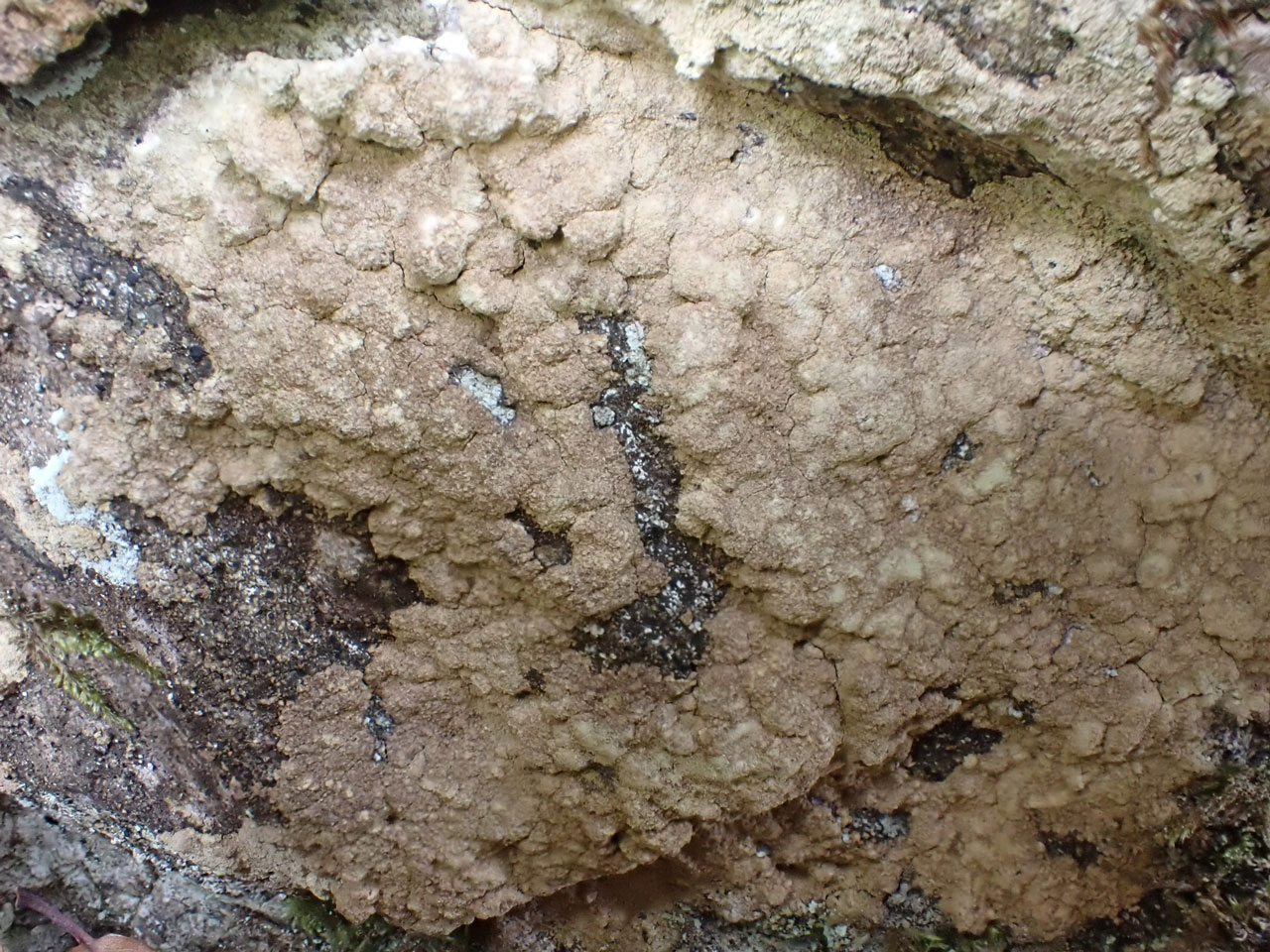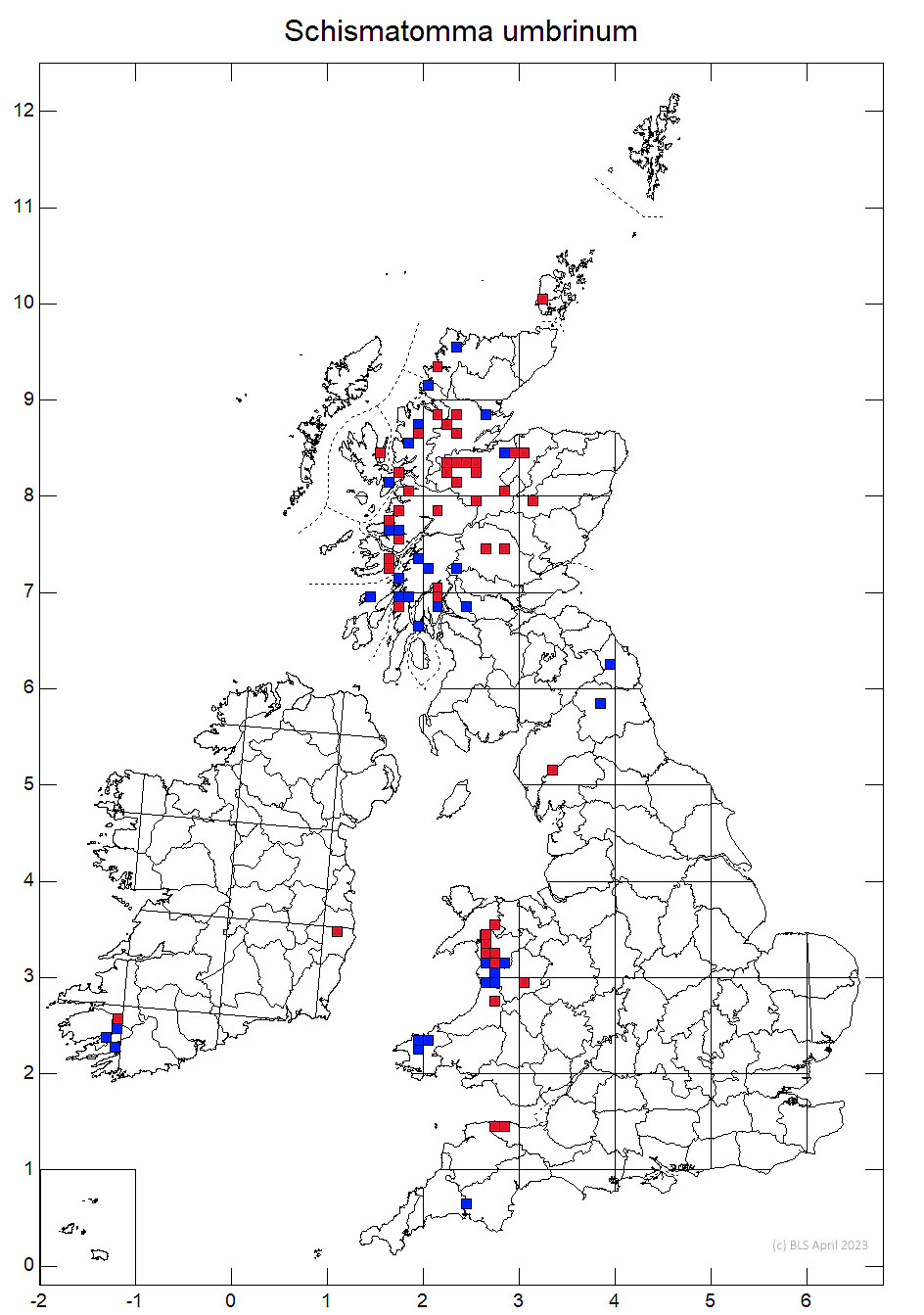Draft
Thallus glaucous green or yellowish- to pale brown, forming discrete delimited rosettes or in a mosaic with other lichens, mostly continuous, soon becoming sorediate in the central part; prothallus very distinct, brownish to purple-black, delimiting a wide (0.5–3 mm) marginal border; upper surface smooth towards the margin, distinctly tuberculate, often coarsely rimose, tuberculae usually bursting apically to form soralia; soralia concolorous with esorediate parts of the thallus, irregular, becoming confluent, photobiont Trentepohlia. Apothecia rare in British material. Apothecia sessile, lecanorine, round to irregular or lobate, to 1.5 mm diam., with a ± prominent thalline margin concolorous with the thallus; disc blackish-brown, convex at maturity; paraphysoids straight, branched only in the upper part. Ascospores 18–22 × 3–5 µm, fusiform, slightly curved. Pycnidia, observed only in a corticolous specimen in Norway; conidia filiform, curved, (10–) 15–20 (–30) × ca 1 µm. Thallus C–, K–, KC–, Pd–, medulla and abraded soralia UV+ ice-blue (schizopeltic acid, 2-3 unidentified UV+ substances).
Dendrographa latebrarum occurs in similar habitats, also has Trentepohlia as the photobiont and similar spot tests, but has a paler, looser and fully leprose thallus, and has a UV+ ice-blue medulla.
On sheltered siliceous rocks, particularly on vertical faces and undersides of overhangs in old moist sheltered woodlands, rarely on bark (Quercus, Sorbus) on dry undersides of overhanging trunks.

Very local. W. & N. Britain, very rare in S. Ireland.
Widespread but local, potentially threatened locally by vegetation overgrown where grazing pressure is reduced in woodlands.
Britain: Notable & International Responsibility species
Cannon, P., Aptroot, A., Coppins, B., Ertz, D., Sanderson, N., Simkin, J. & Wolseley, P. (2021). Arthoniales: Roccellaceae, [revision 1] including the genera Cresponea, Dendrographa, Dirina, Enterographa, Gyrographa, Lecanactis, Pseudoschismatomma, Psoronactis, Roccella, Schismatomma and Syncesia. Revisions of British and Irish Lichens 32: 1-22.
Text by Neil A Sanderson based on Cannon et al (2021)




